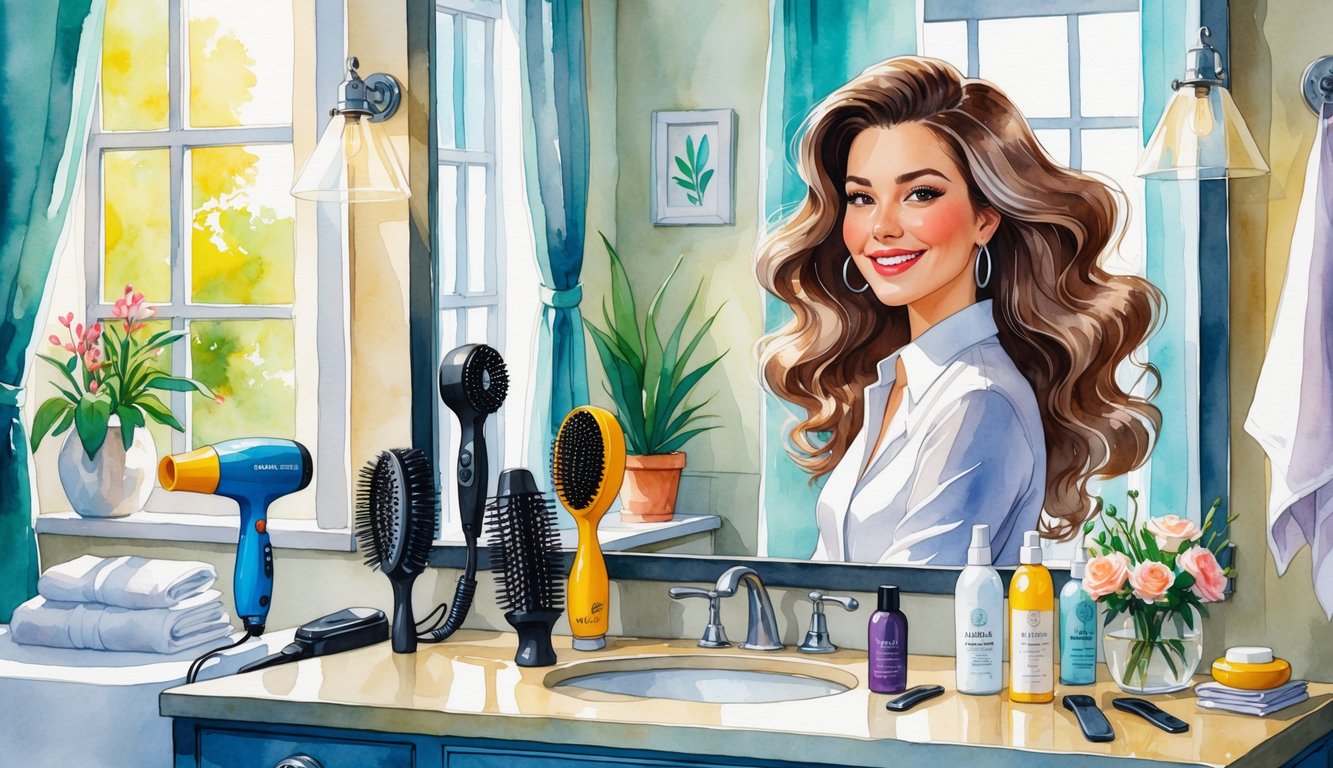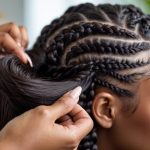
Somewhere between the third pass with my round brush and the moment my arm gives up, I hear my stylist’s voice in my head: “Hold tension or you’re just fluffing it up for nothing.” Okay, but why does her $8 brush in a fluorescent-lit salon create volume that survives three days, and my home attempt looks wilted by noon? I’ve watched her—she sneaks in weird tricks, like shoving rollers in while the hair’s still hot, slicing sections thinner than deli meat, and zapping each with some ionic dryer that costs more than my rent. I never do half that.
Here’s one: dry shampoo before bed, not after you wake up. I thought that was just TikTok nonsense, but apparently actual Manhattan stylists swear by it. Supposedly, it fights oil before it even shows up, so you’re not scrambling to fix limp roots at 7 a.m. And about “volumizing shampoo”—does anyone else feel like it just weighs everything down? My colorist says product stacking is a scam. One good mousse beats three sprays fighting for root space. Also, why does my dog always crawl onto my hair the second I finish? She’s got a sixth sense for fresh blowouts or something.
But what do stylists really do that they’ll never admit? Why do my elbows threaten mutiny before I even finish the crown? I’ll try to spill some of the hacks I’ve pieced together, plus a few actual salon tricks that aren’t just “use less heat.” Because honestly, humidity, dead arms, and those lying product labels sabotage me every time. Who’s got an hour for a full roller set before work anyway?
Understanding At-Home Blowouts: Salon Pros’ Secrets
Every time I try for “second-day salon volume,” my crown mocks me. Is it the frizz? The brush? The fact that stylists keep secrets like state secrets? Prep is half the battle; the other half is just physics disguised as “tips.”
What Is a Blowout?
Forget those shampoo commercials. A blowout isn’t just blasting your hair dry and hoping for the best. My first real salon blowout was weirdly intense: tiny sections, round brush gymnastics, heat settings that felt like splitting atoms. The result? Volume, shine, bounce—plus, my hair didn’t snap off. But only because someone obsessed with hot tools did all the work.
Here’s the “dance”: towel blot, rough dry roots, root lifter (Redken Guts 10 is the one my stylist waves around), round brush until your wrist feels like it’s going to fall off. “Clean sections” matter, apparently, because if you overlap heat, your ends fry. I learned that the hard way. A pro blowout means lifting at the scalp, yanking tension through the middle, and sealing it all with a cold shot that my drugstore dryer barely fakes—unless you’re the person who actually bought that Dyson.
The Science Behind Lasting Volume
I forget this every time: heat doesn’t lock in volume. It’s about hydrogen bonds. Hair is weakest when wet; stylists dry it 70% before bringing out the brush, otherwise, you’re just flattening it again. Don’t touch it until it’s cold. Seriously.
Volume drops if you skip mousse with polymers (Living Proof Full Thickening is the one I keep rebuying), ignore root spray, or try to be clever with three products at once. Those anti-static nozzles on salon dryers? Yeah, they matter. My cheap dryer just blasts everything in every direction, so the shape collapses instantly. And if you brush too soon, it’s game over.
Differences Between Professional and At-Home Blowouts
After a salon blowout, my hair bounces for days. At home, two hours tops. Technique, temperature, section size—none of which I ever nail. Pros use ionic dryers, ceramic round brushes (metal ones are a split-end nightmare), and they never just pile on products—they layer with scary precision.
It’s all about tension and airflow angle. My arms can’t keep up, and my dryer is basically a hair-frying cannon. Even the way stylists twist the brush—twist for bounce, straight for sleek—changes everything. I try that on a Monday and end up with a weird crimp by my ear every time.
If you care about volume, dry shampoo before bed (Batiste is cheap and does the job) and a silk pillowcase help. Not that stylists will admit that’s half the trick. If you want more, here’s another guide and some pro tips, but no one ever mentions the static from a cheap dryer.
Prepping Your Hair for Maximum Volume
Running late, juggling bottles, scalp grumbling about buildup. Shampoo, towel, clips—always there, but somehow pros make it look like an art form. If I mess up the first step, everything else falls apart. Stylists mutter about this all the time.
Choosing the Right Shampoo and Conditioner
Not all shampoos are created equal. Has anyone ever seen a pro grab a random “moisturizing” bottle for a blowout? Nope. It’s always volumizing shampoo, and if the label says “lightweight” or “clarifying,” I’m probably buying it.
My stylist rants about the myth that conditioner kills volume. Too much silicone? Sure, it drags hair down. But a silicone-free, volume-boosting conditioner actually helps. She once waved Redken High Rise Volume at me, complaining about people who skip conditioner—split ends aren’t volume. The Haste Hair guide agrees: clean roots, smart conditioner on the ends, no collapse.
If I have to scan for panthenol or protein, so be it. At least I can sound like I know what I’m talking about when someone tries to sell me a two-in-one.
Towel Drying and Microfiber Towels
Did I buy a microfiber towel out of pure curiosity? Absolutely. Somehow, that $10 rag changed my blowouts more than a $150 dryer ever did. Cotton towels? Disaster. I used to yank out half my hair, then wonder why my scalp ached. Gently scrunching—never rubbing—actually works.
Terrycloth breaks hair and creates frizz. Microfiber? Suddenly, my strands look less like hay and more like I might know what I’m doing. Wrap, don’t twist. NgLora’s tips say overdrying means your products have to work overtime—so if you zap all the moisture, you’re just fighting static.
Weird bonus: my dog always steals my microfiber towel. Not sure what that means. For my hair, though? Total upgrade.
Sectioning Your Hair Like a Pro
Those giant jaw clips I used to mock? Non-negotiable now. Stylists section hair like surgeons—back, front, weird diagonals—so the blowout actually lasts.
I start at the nape, pinning up everything else. If I skip this, the top goes limp and the bottom stays damp. Four sections minimum, or I’m doomed. Salon tutorials hammer this in. My friend Amy “sections” with three sad ponytails. Her blowout? Dead in ten minutes.
It’s chaos, clips everywhere, hair falling in my face. But if I want volume, I deal with it. Stylists do it, so I do too. Begrudgingly.



